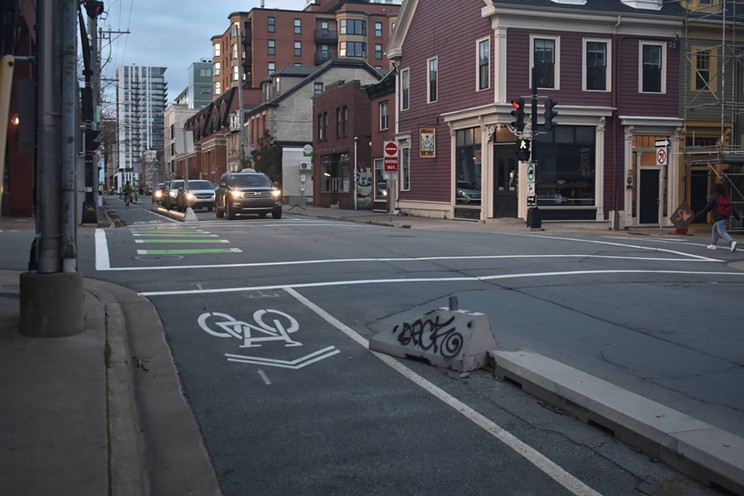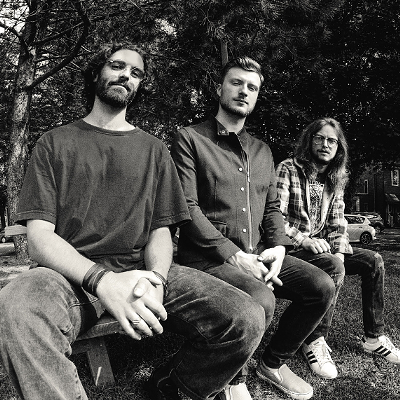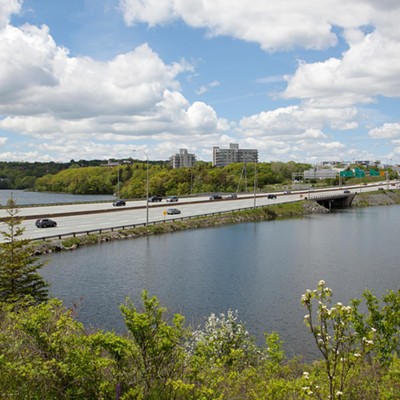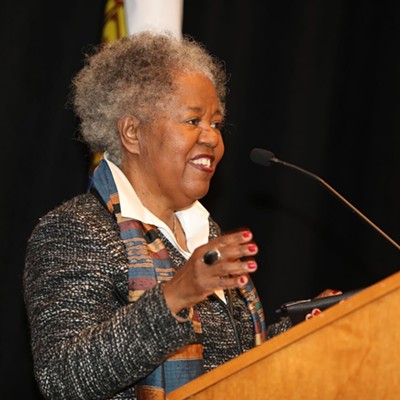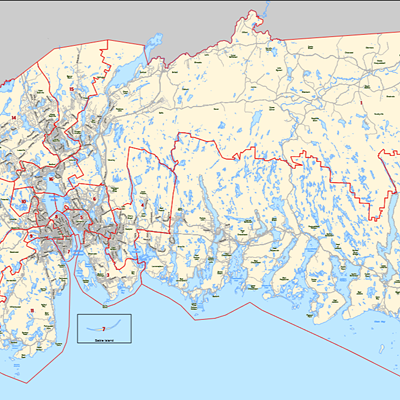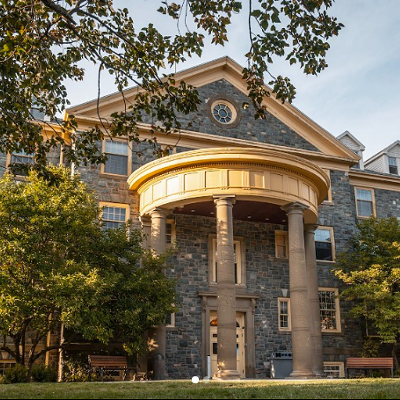Steve MacKay has been cycling in the city for the last 15 years.
As construction on the North End Bikeway Corridor continues—the city’s project to create a safe route for cyclists from the north end to downtown—MacKay has chosen to remain on his route through Agricola Street.
“There’s not enough there to bring me over four blocks,” he said. “It’s two blocks down from Agricola, which is my usual route.”
Furthermore, he finds the design to be counter-intuitive to cyclists like himself, who are comfortable riding in traffic and are looking to get from point A to point B without hindrance.
“If I go there, I have all these stop signs where I have to yield the right of way to people in cars, or dismount and almost fight for my right of way,” explains MacKay.
“I can appreciate it being more appealing to somebody who’s not comfortable biking with traffic on Agricola, where there is less traffic, but for me, where I am comfortable biking with traffic, it doesn’t offer enough to bring me over.”
More bike lanes, more cyclists
While he finds the council of today more responsive to the needs of cyclists like himself, he still wishes more could be done to give them the infrastructure to ride without worry—particularly in vehicle-dense areas.
“They’re not executing [cycling infrastructure] as much as I’d like to see, as much as a lot of cyclists would like to see,” said MacKay. “I don’t think it’s getting executed as much as a lot of staff and council would like to see.”
What he’d like to see is infrastructure specifically for cyclists—most importantly, protected bike lanes. However, barriered bike lanes means less room for street parking, which is especially true given how narrow Agricola Street is.
However, a study from Dalhousie University in 2013 suggests two-thirds of street parking at that time was used by folks who work on Agricola, not necessarily patrons, and MacKay suggests many would choose to hop off their bicycle to run into a local shop rather than drive around the block looking for parking for several minutes.
MacKay also believes more cyclists mingling with traffic will make their fight much easier—and make their commutes much safer.
“One of the biggest things that can help with safety in cycling is having more cyclists. If there are cyclists on the route all the time, the people driving on the route are expecting cyclists all the time.”
Steady progress
David MacIsaac, HRM’s active transportation manager, said although Agricola was in consideration, there was a “strong opposition” from the North End Business Association regarding the implementation of a bike lane which may have reduced parking.
Bike lanes on Maynard and Creighton, however, wouldn’t impact the potential for parking on those streets since they’re one-ways, but MacIsaac says there’s more to consider than that.
“Good quality, safer bike lanes, and to get the kind of conditions for sharing, we need to make sure that car speeds are below 30-35 kilometres an hour, so kind of use traffic calming measures to that, and also make sure that the volume of cars is basically just limited to the people who live there and their visitors, and reduce the shortcutting,” he explains.
And while the city may be far off from being labeled as bicycle-friendly, MacIsaac says they’re making steady progress and are already seeing some of the results of their work in creating an interconnected bike network.
“We’re starting to see longer, connected spines now… If you work in downtown Halifax and you live over Dartmouth, say, on one of the flower streets, or you live off of Shubie Canal Greenway, you can pretty much get that whole corridor on safer bike infrastructure,” MacIsaac said.
With files from Martin Bauman

